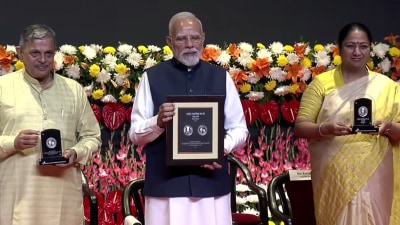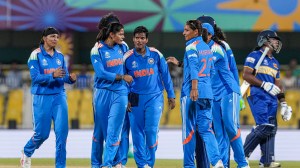After the debacle, time for introspection
As the series draws to a close it is worth reflecting on the tour to Pakistan as a whole. The first two Tests were disappointing draws on pi...

As the series draws to a close it is worth reflecting on the tour to Pakistan as a whole. The first two Tests were disappointing draws on pitches that resembled marble roads, and this was followed by a cracker of a game in Karachi.
Following the Test that finished in four days on February 1 in Karachi, and the first ODI in Peshawar, India have fought back really well and proved they have a young and vibrant side in the making. Players like Mahendra Singh Dhoni, Suresh Raina and Irfan Pathan have rejuvenated the team and India are now a formidable one-day unit, as they showed against Sri Lanka and South Africa recently.
This merely proves my oft-repeated point that most of the teams chasing Australia are closing in on their dominance and I believe the 2007 World Cup will be keenly fought.
For Pakistan the ODI series defeat is disappointing but fortuitous because of the timing – rather now than moments before the World Cup. Against England in December 2005, Pakistan played some excellent cricket followed by a Test series victory against India, but being exposed in the one-day series has caused questions to be asked within as well as outside the team.
Sitting in the TEN Sports studio in Dubai, Nasser Hussain and Imran Khan have been dissecting the reasons behind the significant turnaround in India’s fortunes, much like the turn of events on our tour of India last year, when Pakistan took the last four games on the trot after being 0-2 down in the six-match series.
I believe the reason is fairly straightforward — fatigue for one team and mental stimulation for the other. I am sure that the four-day break between Peshawar and Rawalpindi allowed the Indian team to regroup while the Pakistan team, which dispersed for the Muharram holidays, might just have come off the boil.
Indeed the shift in focus was remarkably obvious in the Rawalpindi game, which leads me to speculate about this theory. Having gained the initiative, Pakistan then lost two tosses in a row and India used the conditions brilliantly to win the series. There was no doubt that bowling first was a slight advantage.
I stress on ‘slight’ because
Pakistan’s batting lacked the discipline that is needed to bat when there is early movement and we lost too many wickets at crucial times. Fortunately, Shoaib Malik was able to string a few good scores together and proved without doubt that he is the man for the number three position.
More importantly, the Pakistan bowlers were put under severe pressure by some excellent batting and fell into the trap of over-correcting and bowling on both sides of the pitch, which hampered any plans that we may have had. Therefore, for the
Pakistan bowling attack so lauded a few weeks previously, they will now have to regroup and work on their one-day discipline, which has not really changed since the inception of one-day cricket in 1965.
In rounding off this final article I would like to congratulate India on their performance and thank them for their sporting behaviour throughout the series. I would also like to wish them well against England. I will be very interested in the results that come out of that series!
(Gameplan)



- 01
- 02
- 03
- 04
- 05




























